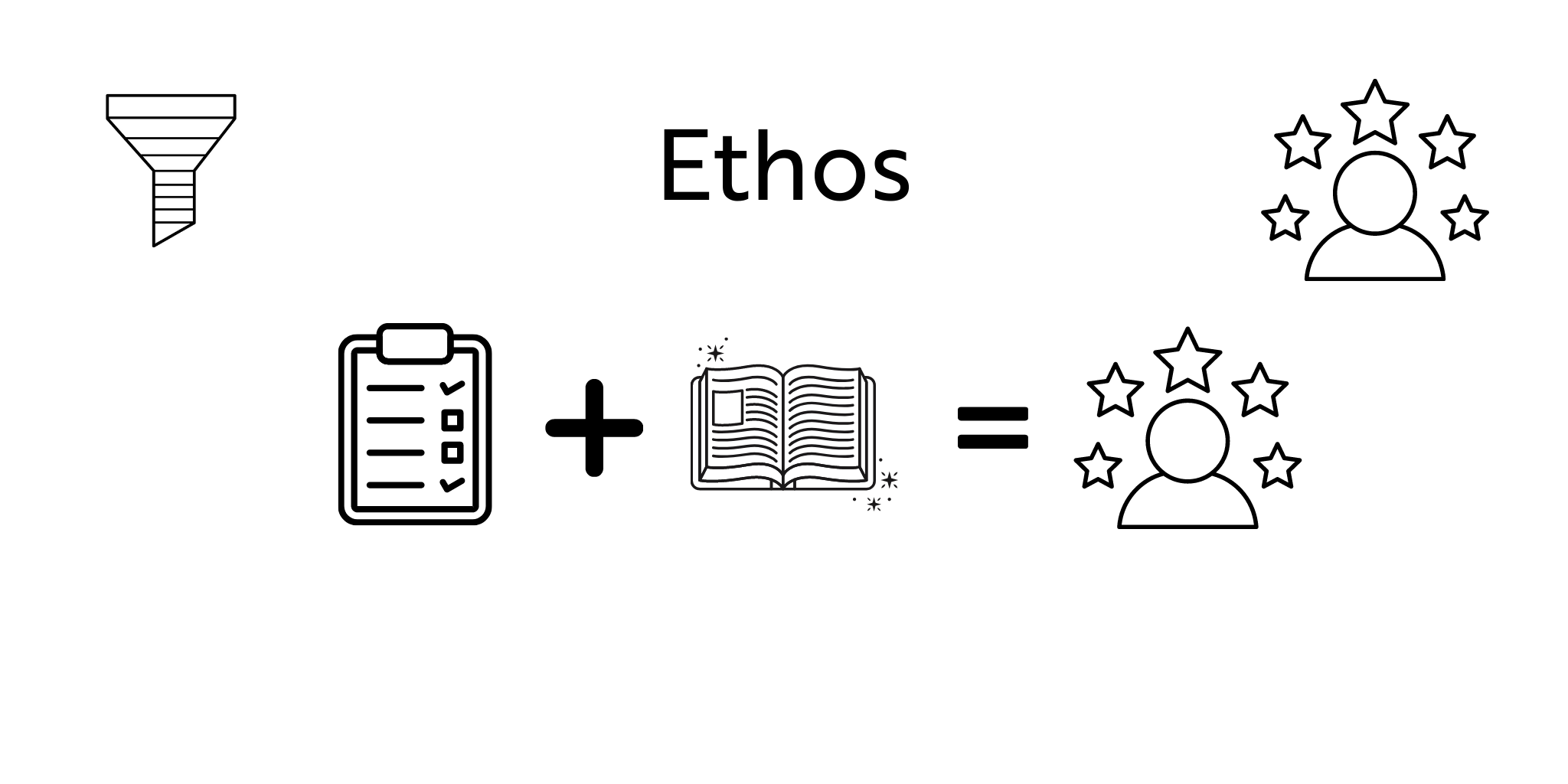Paying Off Advocates with Ethos
Ethos is all about the credibility of the messenger or their bonafide’s. We look up to those that have achieved what we want to achieve or look/act/like what we like. That’s part of the reason celebrities endorse products and services -- it signals that said brand can be trusted.

The third and final part of the Story Funnel is how we payoff advocates. If this were a play or a movie or a novel, this is Act 3. During this part, we’re going to use Ethos (Creditability) as our main tool in paying off advocates so that they will spread the word about how great our offering (and company) is.
This part of the funnel is the longest since it takes time to convince those that use your offering to promote it. It’s also the part of the funnel where customers can fall out of the funnel because they either found a better solution or no longer need your offering. We want to pay particular attention to the behavior of folks in this part of the funnel. Specifically, any surveys or signals that they might be unhappy with your company or offer.
The Ethos Appeal or Your Credibility
Ethos is all about the credibility of the messenger or their bonafide's. We look up to those that have achieved what we want to achieve or look/act/like what we like. That’s part of the reason celebrities endorse products and services -- it signals that said brand can be trusted. At this stage, we want to consistently deliver great results for our customers so that they trust us enough to promote us. This is the goal at this stage it will be the most rewarding part of the funnel if you spend time and attention here. The reason being that happy customers will buy from you again and if promoted the right way, tell all their family and friends to buy from you as well/
You Can Be Just Like Me
The Payoff part of the Story Funnel is where we want to find those customers who will give us a testimonial. It’s these testimonials and reviews that will be the basis of our brand’s ethos. The more testimonials and reviews that are positive, the better.
We want prospects to see themselves in these testimonials so that they can put two and two together. Namely, if I use the offering, I can be just like Phil or Bob or Sue or Cindy. These testimonials have to be from real customers and in their own words. The natural flow of the language should resonate with a prospect and give them comfort that your brand takes care of its customers and delivers on its promise.
They Seem Credible
Brand credibility is vital to build and keep. It can take decades to build your credibility only to lose it in an instant because of some misstep. That’s why everything you do around credibility has to be earned. You can’t buy credibility because it will show through eventually. Let us explain.
Let’s say you hire a spokesperson that is famous or maybe even an influencer on Insta. That’s all fine and good but the claims they make about your brand must always be backed up. You can’t lie about the amazing results if the results don’t materialize. Belief in the brand has to extend to those that pitch the brand -- even if they are paid. Sy Sperling's tv commercials confessing: "I'm not only the Hair Club president, I'm also a client!" are a classic example of this and created a lasting impression on prospective clients.
My People Need This
As with all of the other parts of the funnel, we want to summarize what we want people to think and feel. For Payoff, we want our advocates to think and say “my people needs this.” Notice we want them to Need it as opposed to Wanting it. This is on purpose because, at this point, we should have fulfilled both the wants and needs of the customer. It’s that need, super-served, that’s going to prompt action.
Recall that the need is internal while the want is external. This distinction is important to reinforce because our needs will be more powerful than our wants. Why? A want scratches a superficial itch. It’s the immediate gratification of making something happen while a need goes deeper.
For example, the want of publishing a book is easy to achieve while the need for recognition for publishing said book takes longer but is more meaningful.
Conventions/Requirements + Brand Thru-line
Before we start creating the payoff phase of the Story Funnel, we’re going to look at the last two questions in the Brand Story Guide -- Conventions/Requirements and Brand Thru-line.
Conventions/Requirements will deal specifically with what people will want to see from various types of brands. These expectations are driven by a brand’s Core Value as well as the Structure+Service of the offering. The Conventions/Requirements that we’ll go over will be general ones and as time goes on, I’m sure we’ll be adding some more. The goal of Conventions/Requirements is to give the prospect/customer/advocate what they expect from the offering.
The Brand Thru-line is the macro story arch. This macro view of your brand will allow you to always get your story straight. It’s this macro structure that pulls together all the work we have done so far and allows you and your team to write great copy, consistently.
These final two questions build up a brand’s credibility or ethos. Ethos is all about the bonafide or why you can talk from a position of authority. When you have met expectations and your story is straight from hook, to build, to pay off, then customers will want to help you promote your brand.
Are you ready to settle in and get your story straight by figuring out what people expect?

